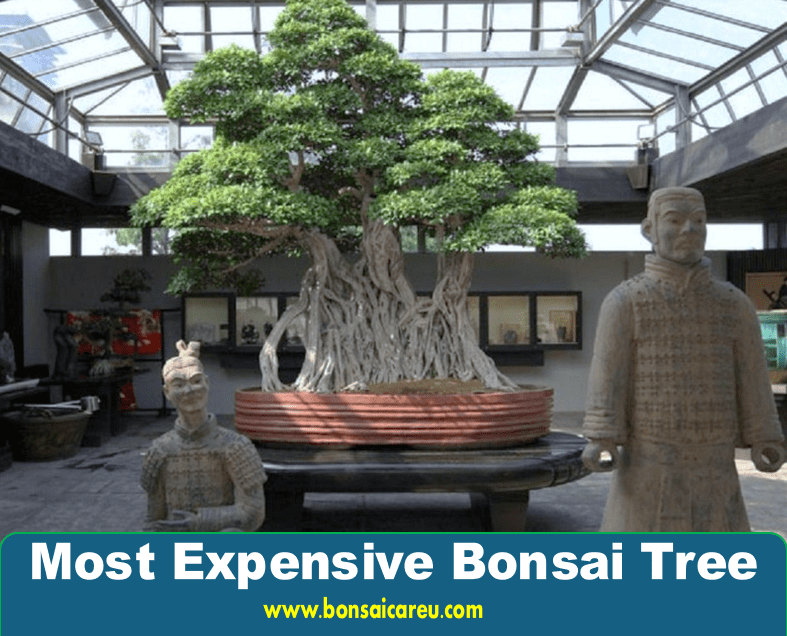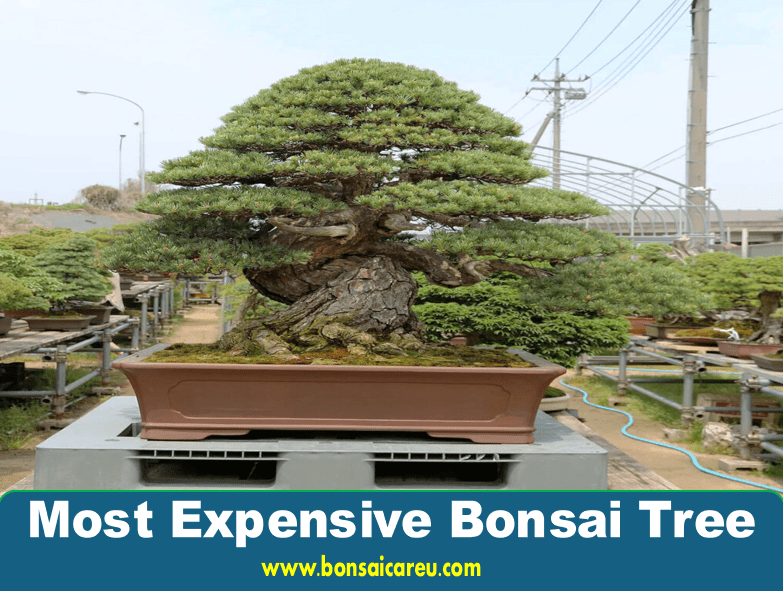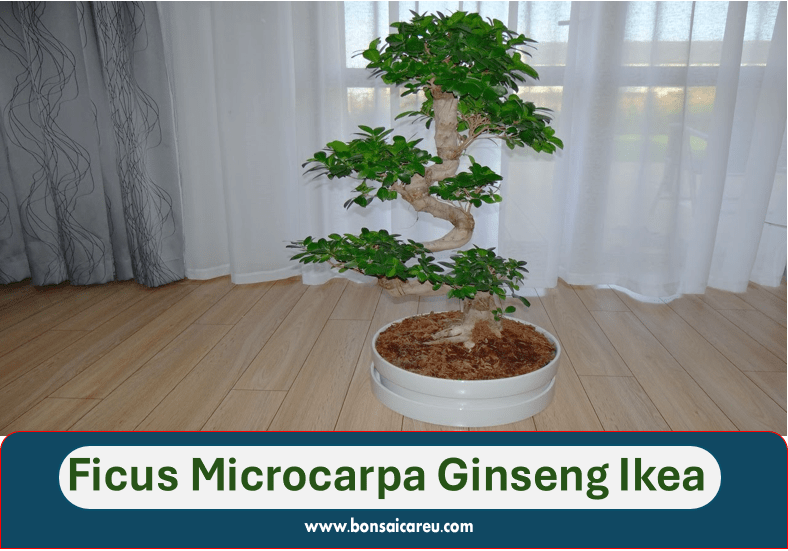Most Expensive Bonsai Tree: The most expensive bonsai tree is the Japanese White Pine, known for its high price tag. This species can grow up to two feet annually, making it one of the quickest and tallest bonsai trees globally.
Bonsai trees have long been admired for their beauty and significance in Japanese culture. The Japanese White Pine is the most expensive among these intricate miniature trees due to its rarity and rapid growth rate. With a hefty price tag, these bonsai trees symbolize elegance and luxury in the world of bonsai enthusiasts.
Let’s delve deeper into the world of bonsai trees and explore the allure of the Japanese White Pine, the pinnacle of luxury in the bonsai world.

The Allure Of High-end Bonsai Trees
High-end bonsai trees hold a unique charm that transcends their botanical nature. These miniature masterpieces exude elegance and sophistication, captivating enthusiasts and collectors alike with their exquisite beauty and meticulous craftsmanship.
Cultural Significance
Bonsai trees have deep cultural roots. They originate in Japan, where they are revered as symbols of harmony, balance, and peace. The art of bonsai cultivation is steeped in tradition and reflects a deep respect for nature and the passage of time.
Symbolism In Luxury
High-end bonsai trees symbolize prestige, refinement, and exclusivity. Owning a rare and expensive bonsai is a status symbol, showcasing one’s appreciation for art, nature, and the finer things in life. These prized specimens are plants and living works of art that embody grace and elegance.
Record Holders: The World’s Priciest Bonsais
Japanese White Pine trees, also known as five-needle pines, are highly prized and among the most expensive bonsai trees. This species can grow up to two feet per year, making it the fastest-growing and tallest bonsai tree in the world.
These unique and rare bonsais fetch top dollar prices in the market.
Japanese White Pine
The most expensive bonsai tree is the Japanese White Pine. This species, also known as five-needle pines, is renowned for its exorbitant prices. Japanese White Pine bonsais are highly sought after for their exquisite beauty and exceptional growth rate. They can grow up to two feet per year, making them the quickest-growing and tallest bonsai trees in the world.
Old Pine And Juniper Varieties
Centuries-old pine and juniper bonsais are among the most expensive in the world. These ancient trees have a rich history and are highly valued for their age, rarity, and unique aesthetics. The Takamatsu Pine and Juniper bonsais have fetched record-breaking prices due to their historical significance and unparalleled beauty.
Factors Driving The Cost
The price of a bonsai tree can vary widely, with some specimens fetching incredible sums. Several factors contribute to the high cost of the most expensive bonsai trees. Understanding these factors can explain why certain bonsai trees are so valuable.
Age And Maturity
The age and maturity of a bonsai tree are significant factors influencing its price. Older bonsai trees are highly sought after due to the time and effort invested in their growth. The longer a tree has been cultivated and shaped, its value increases. This is particularly true for ancient or centuries-old specimens, as they carry a sense of history and rarity, making them highly prized by collectors and enthusiasts alike.
Rarity And Species
The rarity and species of a bonsai tree play a pivotal role in determining its cost. Certain species, such as the Japanese White Pine, are inherently more expensive due to their scarcity and unique characteristics. Additionally, trees that exhibit exceptional traits or belong to rare species are highly valued in the bonsai community, leading to inflated prices based on their scarcity and desirability.
Maintenance And Cultivation Efforts
The effort and care required to maintain and cultivate a bonsai tree directly impact its price. Trees that have been meticulously cared for and skillfully shaped over many years command higher prices due to the expertise and dedication involved in their cultivation. The intricate and labor-intensive nature of bonsai cultivation contributes significantly to the overall cost of the tree, as it represents a culmination of skill, artistry, and time.
Iconic Bonsais And Their Stories
Unveil the allure of the most expensive bonsai tree, the Japanese White Pine. Renowned for their swift growth of up to two feet annually, these five-needle pines are the tallest and fastest-growing bonsai trees globally, captivating enthusiasts with majestic stature and exquisite beauty.
Historical Value
The most expensive bonsai tree is the Japanese White Pine, also known as the five-needle pine. This species is renowned for its historical significance, with some trees dating back centuries. These bonsais’ age and historical value contribute significantly to their high price tags.
Famous Ownership
Several famous personalities and collectors have owned iconic bonsai trees, adding to their allure and value. Notable figures such as celebrities, royalty, and influential business leaders have been known to possess these prized bonsais, further solidifying their status as prestigious and highly sought-after possessions.
Japanese White Pine trees, commonly known as five-needle pines, are recognized as the most expensive bonsai trees. This species can grow up to two feet per year, making them the quickest-growing and tallest bonsai trees in the world. Their historical significance and famous ownership contribute to their exorbitant prices, making them highly coveted and revered in bonsai cultivation.
For example, the Takamatsu Pine Bonsai is a renowned five-needle pine that has garnered a reputation for its historical value and has been owned by prominent individuals throughout history.
Caring For Premium Bonsai Trees
Caring for premium bonsai trees involves high attention to detail and maintenance. From creating the optimal environment to mastering pruning and shaping techniques, caring for these exquisite trees requires dedication and expertise. Long-term preservation is crucial to ensure the bonsai’s enduring beauty and value. Let’s explore the key aspects of caring for premium bonsai trees in more detail.
Optimal Environments
Creating the ideal environment for premium bonsai trees is essential for their health and longevity. These trees thrive in well-lit areas with ample natural light, but they should be protected from direct, intense sunlight to prevent burning. The temperature and humidity levels should mimic the natural habitat of the specific bonsai species, which can vary widely. Proper air circulation is also crucial to prevent stagnant conditions leading to disease.
Pruning And Shaping Techniques
Pruning and shaping are vital for maintaining the exquisite form of premium bonsai trees. Regular pruning helps control the tree’s growth, encourages new foliage, and maintains the desired shape. Shaping techniques, such as wiring and bending, sculpt the bonsai into elegant and artistic forms. Careful attention to detail and the tree’s natural growth patterns are crucial to achieving the desired aesthetic while promoting the tree’s overall health.
Long-term Preservation
Long-term preservation is essential for ensuring premium bonsai trees’ enduring beauty and value. This involves meticulous care, including regular watering, fertilization, and pest control. Repotting at appropriate intervals and monitoring the tree’s overall health is essential for its continued vitality. Over time, the bonsai’s appearance may evolve, requiring adjustments to its care routine to preserve its beauty and character for future generations.
The Market For Luxury Bonsais
Luxury bonsais are not just exquisite horticulture pieces but also investments and status symbols. The market for luxury bonsais has surged in recent years, attracting collectors, enthusiasts, and investors alike. These living artworks offer a unique combination of natural beauty and cultural significance, making them highly sought after by connoisseurs worldwide.
Buying Tips
- Research the different species and their unique characteristics.
- Inspect the tree for symmetry, balance, and overall health.
- Consider the age, history, and provenance of the bonsai.
- Consult with reputable bonsai experts or dealers for guidance.
- Set a budget and be prepared for potential maintenance costs.
Investment Potential
Luxury bonsais, especially rare and well-maintained specimens, have shown remarkable appreciation in value over time. As living antiques, these bonsais can serve as alternative investments, offering potential returns and hedging against market volatility. The scarcity and uniqueness of certain bonsai trees contribute to their investment appeal, attracting discerning collectors who recognize their enduring value.
Top Sellers And Auctions
| Vendor | Tree | Price |
|---|---|---|
| Bonsai2U | Takamatsu Pine Bonsai | $18,941.00 |
| Wigert’s Bonsai | Chinese Banyan | $30,000.00 |
| houseofbonsai.com | Japanese Maple Bonsai Tree | $3,100.00 |
| Love My Bonsai | Various Specimens | $4,000.00 |

Frequently Asked Questions For Most Expensive Bonsai Tree
What Is The Most Expensive Bonsai Tree?
The most expensive bonsai tree is the Japanese White Pine, known for its rarity and high cost.
What Bonsai Tree Sold For $2 Million?
The most expensive bonsai tree sold for $2 million. It was a centuries-old Japanese white pine, a five-needle pine. This species is known for being the quickest-growing and tallest bonsai tree in the world, with the ability to grow up to two feet per year.
What Bonsai Tree Sold For $2 Million In 1981?
A Japanese White Pine was the most expensive Bonsai tree, sold for $2 million in 1981.
How Much Is a 400-Year-Old Bonsai Tree?
Depending on size and species, a 400-year-old bonsai tree can cost thousands to millions of dollars.
What Makes A Bonsai Tree Expensive?
Certain species, like Japanese White Pine, with unique characteristics and rapid growth, contribute to their high prices.
Why Do Some Bonsai Trees Cost Thousands?
Factors include rarity, age, aesthetics, and cultural significance, making some bonsai trees highly sought after and expensive.
Conclusion
The world of bonsai trees is a fascinating and expensive one. The most expensive bonsai tree is the Japanese White Pine, also known as the five-needle pine. This species is expensive and the quickest-growing and tallest bonsai tree in the world.
It is amazing to see the patience, dedication, and skill that go into creating and maintaining these beautiful miniature trees. Although investing in a bonsai tree may be costly, it can be a valuable addition to any collection.


